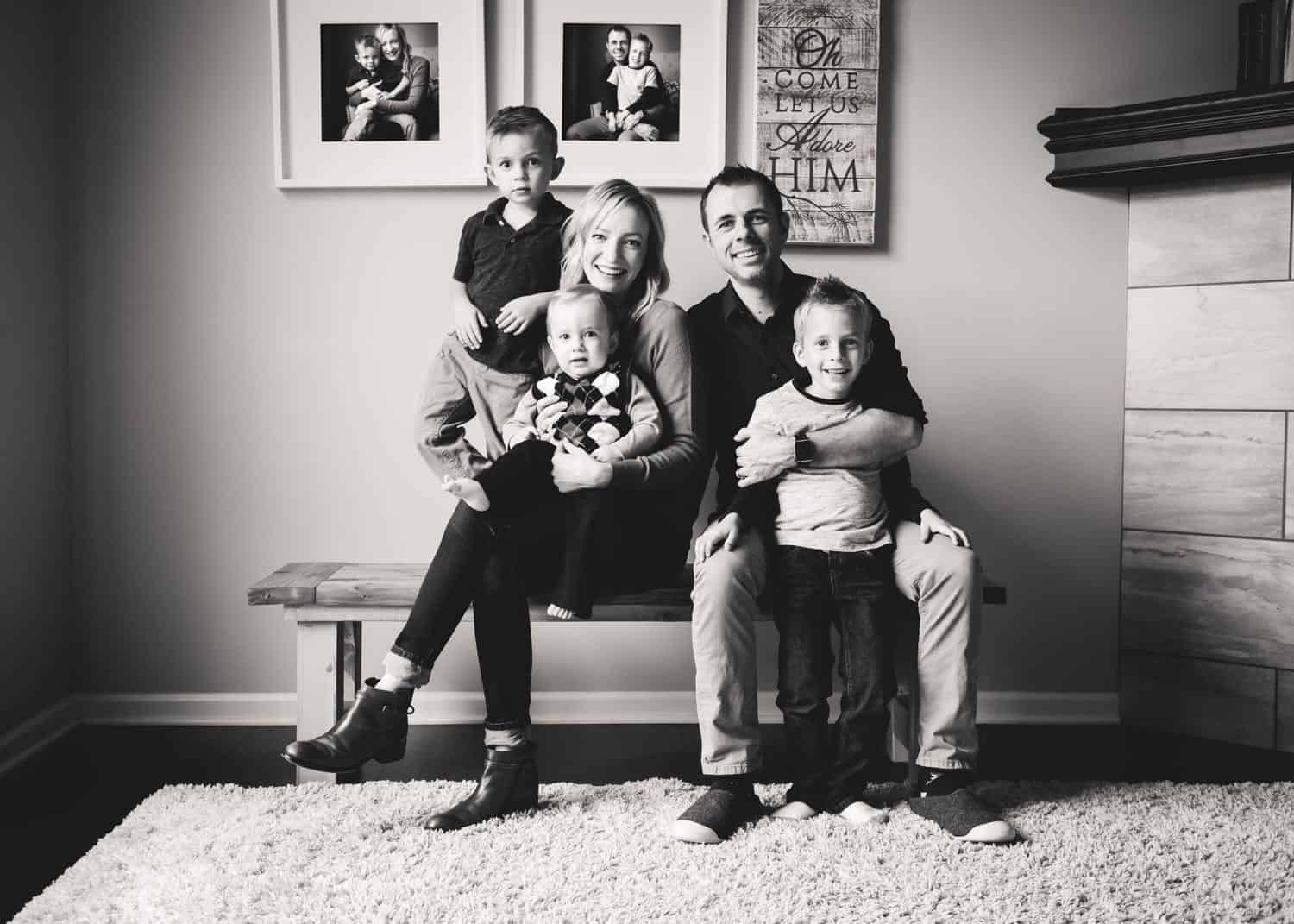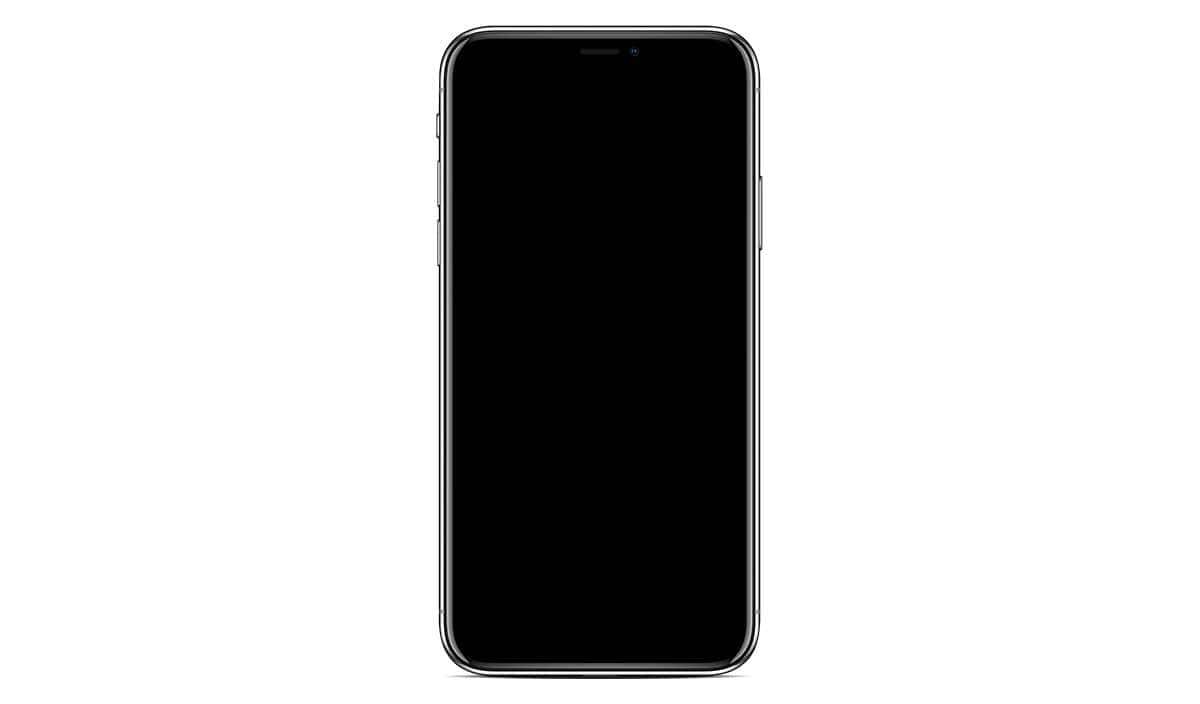

I was in Nashville last week and snapped these photos on my trusty Olympus E-M10 with the 20/1.7 pancake.


I was in Nashville last week and snapped these photos on my trusty Olympus E-M10 with the 20/1.7 pancake.
Pre-S #1: The past few Fridays I’ve been writing about goal setting. You can catch up on past articles here, here, and here.
Pre-S #2: Plan Your Year is now available. Check it out here.
Today I want to share with you a simple-yet-powerful structure for attaining your goals.
And what’s special about this little process is that it’s free from any particular productivity system, app, or methodology.
It’s as simple as this:
That’s it. You’re looking at the fundamental formula for planning and accomplishing.
Here’s why this little process works so well:
You’re taking one big thing, and breaking it down into something small and simple that you can do today in incremental steps.
You’re taking a goal, and your then moving on to focus on the system that will get you there.
Contrast that against something that is more common: coming up with an idea or a goal, and then instantly thinking of all the big hurdles and “unknowns” related to that goal, and then quitting before you even get started.
You’ve no doubt heard the adage: How do you eat an elephant? One bite at a time.
It’s important to focus primarily on steps 2 and 3 — identify the one thing you can do to make progress and then go do it.
But instead, many people focus mostly on step #1 — the goal itself. I’m all for having clear goals, but staring deeply into the eyes of those goals will not make them come about. You’ve got to take action.
If you remember from last week we talked about the two camps of goal setting, and why it’s so important to focus on the system that keeps you moving and taking action.
When you’ve identified one single action and one single result, then the focus is no longer on managing your tasks — the focus is now on doing them.
There’s nothing wrong with systems and methodologies. In fact, once you have the wisdom and the skills to identify the most important thing to do next, then you can use any system or methodology you want. Use whatever makes sense for your personality type and your work environment.
Once you have the wherewithal to define what meaningful productivity looks like for you, then your productivity tools become a slave to your priorities, not the other way around.
Next we’re going to talk about how to lower the barrier of entry to your goals so you can finally get started on them. It’s a little something I like to call “activation energy”.
And in the meantime, you may be interested in my brand-new workbook: Plan Your Year. It’s simple and will help you get a clear, birds eye view of your year so you can focus on what is most important.
For the past 6 years, every January, my wife and I take an evening or two and we map out our upcoming year.
We each get a few pieces of paper and use them to list the year’s important events, milestones, plus any goals we have or other things we want to do. Then we go through that list and decide when those things are going to happen and what we’re going to do to help make them a reality.
It’s a very approachable way to get a birds eye view of the upcoming year.
It helps us define what matters most to us for the year and what obstacles we may encounter. And year after year, this time of planning has proven to be a highlight. It has a positive impact on our year, and it’s also a lot of fun since the process facilitates some great conversation.
For this upcoming January, I’d love for you to be able to go through your own process if you like. (And you don’t have to be married — this is something that works for anyone and everyone.)
I have put together something simple and new. It’s called Plan Your Year.
Plan Your Year is a small workbook that walks you through the exact same process Anna and I go through each January.
The workbook is just $19 and is something you can do in a single evening. Check it out.
May you get out of bed on January 1 and get to bed on December 31, and in-between do what you want to do.
A few weeks ago I stumbled across an old Christmas wish list from when I was about 10 or 11. And there were 60-some-odd items on it. At the top of the list was a CD boom box with dual tape decks. I remember getting that boom box for Christmas, and I remember my wild excitement.
There was another year when I was obsessed with getting the new TMNT arcade game for my Nintendo. Even now, well over 20 years later, I still have clear memories of opening that gift, freaking out, and then playing video games nonstop for about a month or twelve.
But as I’ve gotten older, it’s not about the items any longer.
I can buy pretty much anything I want. (If not for cash, then at least with credit which would be dumb but that’s not my point right now).
I think about this every year. What I have always wanted most has always been what is beyond my ability to buy. It was true when I was a boy, and it’s still true now that I’m a man.
The things I want most are a healthy family, the time to play with my boys, and a thriving marriage. It’s Christmas morning, and I got what I wanted.


My favorite feature of iOS 11 has been Do Not Disturb While Driving.
At stoplights, it’s almost universal that most folks will be looking at their screen. While annoying, at least this isn’t life-threatening behavior.
But stoplights aside, it is uncanny just how many people I see texting while driving. I often want to honk at them and remind them to put their stupid phone down, but I’m afraid that I’d just cause a wreck.
Needless to say, Do Not Disturb While Driving is a feature that will undoubtedly save lives. And so, in that respect, DNDWD is my favorite feature that everyone has who is using iOS 11.
But it’s also my personal favorite feature as an iPhone owner.
It has now been months since I received a notification while driving. And I have absolutely noticed how much more calm and present I feel when driving.
I love that my phone never buzzes and my watch never notifies. And there is no fear of missing a truly important message or phone call because people can get through if they need to. But so far, I have received exactly zero “urgent” messages while driving.
In addition to the the “While Driving” part, Do Not Disturb is a pretty great feature in general.
Both my iPhone and my Mac are scheduled to stay in Do Not Disturb mode until 11am every day. This gives me a good 3-4 hours every morning to do my work without any incoming notifications.
For about two days I tried turning off internet access for my iPhone in the evenings (using the settings of my Eero). But it was very short lived — since I quickly realized that without internet access I couldn’t control my Sonos nor our Nest. Also it meant my iPhone wasn’t automatically backing up at night and updating.
However, I liked the idea of having no internet access in the evenings. There was no “pull” to just check stuff.
Some folks recommended that I just turn off all notifications and put my phone down somewhere else.
But I already do both of those things. For years I have had notifications turned off; I only get pings for incoming text messages and DMs. And my phone is usually by the fridge in the kitchen.
My no-internet evening experiment wasn’t so much about cutting off the incoming distractions as it was about giving myself the mental breathing room (similar to DNDWD) that accompanies the complete absence of something.
I never got into Tumblr, but I loved the idea behind it.
Tumbler encouraged you to post anything and everything: quotes, links, conversations with friends, photos, videos, articles, etc.
On the one hand, this led to tons of Tumblrs being the online equivalent of an angsty teenager’s messy bedroom. But on the other hand it also encouraged folks to put stuff out there day after day.
For the most part, I am an advocate for the idea that constraint breeds creativity. But sometimes the constraints need to be removed so you can just get unstuck.
And that’s something Tumblr got absolutely right. Because Tumblr had all sorts of various post types, there was no right or wrong thing to publish. You could share anything you found to be interesting or special or unique or funny or helpful, no matter the format. It all counted. You didn’t even need to have a title.
Contrast that with WordPress where, for a long time, the only post format was written text. Which meant that if you didn’t have something to say via written text, then you didn’t really have anything valid to publish.
And but so, if you find your output slowing down — or dammed up altogether — what can you do to get unstuck?
Remove whatever (false) constraints may be holding you back. Find a new outlet. Maybe just choose to get started again.
Daily creative output is inconvenient — no doubt about it. It’s messy. It’s up and down. That’s just the way it is.
The impediment to action advances action. What stands in the way becomes the way.
In the past year, I’ve been to Austin, Chicago, San Diego, Atlanta, Breckenridge, Denver, Boise, Portland, and Nashville. It’s the most amount of traveling I’ve done in a 12-month period in the past 10 years.
It used to be that I would step on to the plane with the excitement of having a few hours to work on whatever I want — I figured that I would have several hours to put on my headphones and just write. But over the years I’ve learned better. In reality, when it comes to doing creative work such as writing, I am just not productive on flights.
Some folks can write an entire novel over a series of airplane flights. Not me. Though sometimes I will edit content that I’ve already written (such as moving an article from the “idea” folder to the “edit” folder).
If you’re looking to be productive when you travel, my best advice is this:
Have a specific goal in mind and be prepared for it.
(That advice goes for quite a bit beyond just travel productivity, btw.)
In short, don’t step onto that plane with a blank canvas and the hopes of being inspired. Instead, know your desired outcome and prepare ahead of time. What are you hoping to get done? What do you need to do to make it happen? What will you be doing on the flight?
A little bit of preparation goes a long way. Because then, once you’re on the flight, all that’s left for you to do is get to work.
As I said, I’m not good at creative work or inspirational thinking when on a plane. Therefore I have found other ways to still make the most of my time (though I’m also not above watching a good kung fu movie).
Before my flight, I download a few podcast episodes or an audio book. Then I listen (with my B&O H7 headphones) and take copious notes.
Listening to a podcast or audiobook while taking notes is a great way to learn the material. It’s also a more passive form of creativity and work. It’s been helpful for me, and the results from the notes are always a huge asset. For example, my book club articles for Rhinoceros Success and The Dip both came about from times I was traveling this past year.
After listening to my podcast episode(s) or audiobook, I’ll then watch a movie or read a novel and just relax. Or sometimes I skip the note-taking altogether and get straight to the movie.
We were in Colorado for Thanksgiving weekend, and downtown Castle Rock is just amazing during the holidays.
My family and I spent this past Saturday evening walking around the downtown area, and I took this nighttime photo with my iPhone X and then edited a bit with the VSCO app…

Not bad! Especially when you compare it to this next pic, that I took few years ago on that very same street corner. Except that this one I took with my fancy Olympus camera and the Panasonic 20mm f/1.7 lens:

There will be some people who strongly dislike it.
I’ve always felt that great design is polarizing. There will be some who love it and others who hate it.
For example, I recently received a request for a refund of the Focus Course from a fellow stating that the content was “inane, generic, bland and full of nothing but buzzwords.”
Negative and vile feedback like that used to really throw me for a loop. I’d worry, What if they’re right? What if I’m selling snake oil I and don’t even realize it?
There is a difference between constructive feedback and angry feedback. If the former, I’m all ears. I am happy to learn from genuinely unsatisfied customers who tell me they were expecting one thing but got another. That is a great way for me to improve my marketing, products, and more.
But angry feedback just comes from angry people. They feel entitled to something and they want you to know just how angry they are. Angry, hyper-negative feedback is not a reflection of you nor of your products. It is a reflection of the person giving the feedback.
And so, in times like that, I choose to politely refund their money, delete their email, and go about my day creating new things and working toward what’s next.
(As a side note, I’d rather get negative feedback than no feedback at all. Perhaps the worst response to a product would be indifference.)
It’s not easy to make something and put it out there.
Another way to tell you’ve created something worthwhile, is to look at the people who are talking about it, sharing it, and using it.
Look around at the people who are gladly doing business with you. Are they people you respect? If so, then you’re doing it right.
Sometimes it’s hard to get a clear picture of the work you’re doing. You’re so immersed in the product and the message that you can’t easily step back and see it all with fresh eyes.
But if there are people who you find awesome, and they are happy to be around your work and they actively seek you out, then you are on the right track. You’re serving the right people doing something worthwhile. Good job.
When you’re living a focused life, it’s your personal vision and values that serve as the foundation for how you spend your time and energy.
Start with what’s important to you, and then use that to direct where you spend your time, energy, and attention. (Many people do it backwards, and they allow their time and energy to be spent on things that are important to other people.)
When you have core values as a business, they too can help drive the choices you make as you grow.
As you know, there are so many options for how you can grow your business or side-project…
Do you focus on awareness, traffic, conversions, subscribers, followers, opt-ins, downloads, customer lifetime value, customer satisfatcion, membership churn, new products, networking, hiring, or something else altogether?
And since there is no singular path to success, it’s not a cut and dry roadmap. Each business or side-project is unique in terms of why it exists and what stage of growth it’s in right now.
When you’re not sure what to do in a situation, your business’s core values can help.
Moreover, as your business grows, new opportunites will present themselves. Your core values can help you choose what to say yes to and what to decline so that your success doesn’t end up leading you to failure.
Until recently, we didn’t have Blanc Media’s core values written down or articulated. Now that we do, I wanted to share them with you.
We follow through on our commitments. We put our audience and customers first and condisder it our responsibility to take care of them on an ongoing basis.
We are honest. We teach what we know in order to help others who are on a similar path. We do not overhype or overexagerate our work, but neither do we downplay or undervalue it. By being transparent we hope to earn the trust of our audience and build customers for life.
In business we always seek to provide value first and foremost, without expectation of return. We also seek to increase charitable donations every year so our giving grows along with our business.
We create opportunities for people to connect in a vibrant community where they can connect with one another by sharing their challenges, opportunities, and successes; building a creative career is challenging, and a strong community can help mitigate the fears that go along with that. We are also building an internal team of employees and contributors who practice integrity and pursue generosity in order to create something greater than the sum of their individual abilities.
Last week my wife and I had our third (!) boy. His name is Benson, and he’s awesome.

Everyone is doing well, and there is much excitement here at the Blanc house. Benson’s older brothers love having this little guy around. We are all feeling full of love and thankful for this life we’ve been given.
As I mentioned yesterday, I’ve been asking folks what their biggest challenge is right now related to doing their best creative work.
By far and away, there are two very common themes:
And the second them is along the lines of not having the clarity you need for where to focus your energy and what priorities to set for yourself.
(FYI: For both of these two themes I’ve already put together some resources: Both the Time Management Class and The Focus Course respectively.)
But there are also quite a few more specific questions I’ve been getting. And over the coming weeks, I’m going to be diving in and answering them.
Let’s get started…
* * *
Here’s a question I received from reader, Ross Kimes. He says:
The first thing that comes to my mind is what you all know: There is no single path to success. Even Seth Godin attributes quite a bit of his own success to chance and luck.
See also this video of Kevin Kelly’s fantastic talk from XOXO 2014.
So my point is that you’ve got to love the process and the journey. You must love doing the work. And you’ve got to be delighted with having just a teeny-tiny amount of impact.
This is crucial for a few reasons.
For one, as you know, it’s not a sure bet that you can turn a personal project into a full-time gig. If the only reason you’re in this racket is to make it big, you might not make it. And so, then what?
Now, I know that’s not you. You wouldn’t be showing up to do the work on the nights and weekends if you didn’t love it already. Which is why there is another reason you’ve got to love the process…
The bigger reason you’ve got to love the work is because the work never gets easier. Every single day you choose to show up, it’s another choice. If you don’t love the work now, when it’s on the side, you won’t love it then when it’s something you have to do.
* * *
Going from amateur to pro is as simple as getting a sustainable business model.
In order to do that, you need customers and clients, a valuable skill-set and/or a valuable product, the right mindsets, and more.
Thus, the road from amateur to pro is jam packed with micro-adjustments as you learn and mature and adapt.
Here’s the great news: you can do it. I know you can.
There has never been a better time in the history of history to take your personal project that you do on nights and weekends and turn it into your full-time job.
You’re not too late. You haven’t missed your opportunity. It just takes a TON of hard work. It won’t happen over night.
* * *
Lastly, here are some unordered thoughts from my own experience of writing on the side for several years before going full-time, and then growing my business over the past 5 years.
There are so many reasons why it’s vital for you to show up every day. The main ones are that (a) you need a creative habit; (b) you need to prove to yourself you’re in it for the long run (remember that thing about loving the work); and (c) you need to build your audience.
Showing up every day is the best thing you can do for your business, your creativity, and your platform.
Once you take your personal project full time, you’ll be surprised how difficult it is to keep showing up. You’ll find that there is a stronger pressure to show up and deliver (which, ironically, can make it more difficult to keep showing up). You will also have a hundred new things you didn’t have to do before, like bookkeeping.
Show up every day in order to build your audience, your reputation, and your “brand”. The internet thrives on regular cycles and people get used to looking forward to things in daily / weekly doses. So you need to make sure you’re a part of your audience’s daily / weekly routine even now while it’s still your personal project you do on the nights and weekends.
In a nut, the rule of reciprocity looks like this: if you buy someone coffee, they will feel indebted to you. They will want to buy you lunch.
So, in the world of marketing / business, this idea translates into a focus on giving and then asking.
Do people take advantage of this idea? Yes, absolutely. Do they do things that are annoying or sleazy? Yes.
But you’re not other people.
You need to give, give, give. Then give some more. Be the first one to provide value, every time all the time. Make the life of your audience better than you found it, every single time you interact with them.
Be willing to give if there’s nothing else next. (That’s why you’ve got to love the work, remember?)
If you give enough, then you earn the right to ask. But, of course, that’s not the point.
The point is: are you willing to give if that’s all there was to it?
Now, of course, you have to pay the bills and feed your kids. I do, too. We all do.
So you absolutely need to ask, and that does not make you a sell out or a shady person.
Give and ask. Don’t focus on just one or the other. You need to do both to survive and to serve.
Make sure you are always out-giving your audience. Always give more; always over deliver; always surprise and delight.
You need to be seen as the most trusted advisor, and not just as a conveyor of yet another commodity. As Jay Abraham says, the competition and the consumer are both trying to commoditize you. Don’t let them. Don’t surrender.
You have to establish yourself as the only viable solution to a challenge or opportunity in your client’s life. You want to always be guiding them to make the right decision — which doesn’t mean only ever doing business with you. Because you want to make your relationship a permanent one.
You need to practice making money.
Get into a cycle of shipping so you get used to the innate fear related to putting your work out there.
You learn so much by selling. You begin to normalize price points (which price-points do you want to play in?), you learn how to serve your clients/customers better, you get familiar with doing business and developing your business plan, and so much more.
Personally, I’m a fan of having multiple streams of income through multiple products and services.
Not only does this minimize the risk that your entire business model goes away over night (because you don’t have all your eggs in just one basket), but it also means you can serve different people in different markets and at different price points.
At Blanc Media, we have a little over 11 unique streams of income: sponsorships; display advertising; affiliate sales via iTunes, Amazon, and others; my Shawn Today membership; Delight is in the Details; Day One in Depth; The Focus Course; Time Management Class; Awareness Building Class; The Focus Club; coaching and consulting.
Three months is the minimum. I’d aim for six if you can. Six months worth of expenses saved up, and sitting in the bank as your financial margin.
How much you save can depend on how at risk you are to losing all your income at once.
When you are taking your personal project full-time, you want to be free from financial burden. Get out of debt.
It’s going to be financially stressful enough as it is as you work to get your revenue streams regular and sustainable. But also, you want to be able to take as much of your income as you can and invest it right back into your business to help you grow while staying debt-free.
In short, Change careers like Tarzan.
Doing the independent creative entrepreneur thing is super lonely. All the more a reason why social support is your single greatest asset.
Find a mentor or a coach. Get around a community of like-minded folks. Go to conferences. Never eat alone.
It’s the only way you can own your platform. It’s the most profitable way to sell your products.
And, most of all, it’s the most direct way to serve and connect directly with your audience. It’s a fantastic way to develop open feedback loops with your readership as you serve and nurture your audience.
In short, your email list allows you to do many things. But, most of all, it allows you to focus on relevancy rather than recency.
What else is great about building your email list is that as your business grows, you can begin to automate your processes and emails.
I have definitely learned some things from the internet, but the things that have most impacted my business mindset have come from the printed page.
Here are a few recommended books:
Earlier this year I wrote a 7-article series on creativity and entrepreneurship. Here are those articles.
Do you know that feeling of returning from vacation and the challenge of getting back into your daily routine?
It can be a challenge even if just returning from a long weekend. Or it doesn’t even have to be a vacation. It could be anything that pulled you out of your day-to-day routine for a while. And as you begin to get back into the swing of things, it’s just not that easy.
That’s me as I type these very words.
They say that showing up every day is about making little but surely progress on things. Which is deeply true. But there is something else as well.
That something else is called Momentum.
Doing your best creative work can be a real fight. And showing up every day is the best way to keep showing every day.
But we all take breaks. We all have unexpected interruptions. We all lose a bit of momentum at some point. What’s the best way to gain it back?
* * *
Yesterday evening, Sunday, I was up far past my bedtime. I had to finish reading 11/22/63. It was the last day of our family “staycation”, and I couldn’t help but marathon through the last few hundred pages of the book.
Today is Monday. And it was a fight to get out of bed this morning. I will be candid with you. I struck the snooze button when that alarm first went off, and I seriously considered striking it again. My mind and my body wanted to continue vacationing.
When you’ve been out of your day-to-day routine for a while, those creative muscles atrophy. To build them up again, you must show back up and return to the work.
For me, it was only 3 days that I took off. For 72 hours I didn’t look at email or scroll Twitter. I didn’t read a single business book. I didn’t write a single word. We had a fantastic time as a family. I wouldn’t have even stepped into my home office at all if I hadn’t forgotten to make the fall tuition payment for my son’s preschool.
Three days isn’t long. But even after 3 days, I can feel myself losing a bit of creative momentum. I’m sure you can relate.
It’s not quite so easy to sit down in the chair and start writing. (Technically I’m standing at my desk, but that’s details.)
To regain the momentum there is no trick. No secret. You have to simply show up.
But try this: set your bar of success a few notches lower. Don’t hold yourself to a standard that is so high you will only feel the pangs of shame at not succeeding right away.
Instead, hold your creative output to a lower standard than normal. Especially for your first few days back. For me, this morning, my goal was to write for just 30 minutes instead of my usual 90 or more.
The point is to merely punch the card that says you were here. You showed up. Now give yourself a high-five, and go make another cup of coffee.
Doing your best creative work is already a fight. Don’t make it harder on yourself than it has to be. You’ll return again tomorrow. And before you know it your creative output will be right back to where it was.